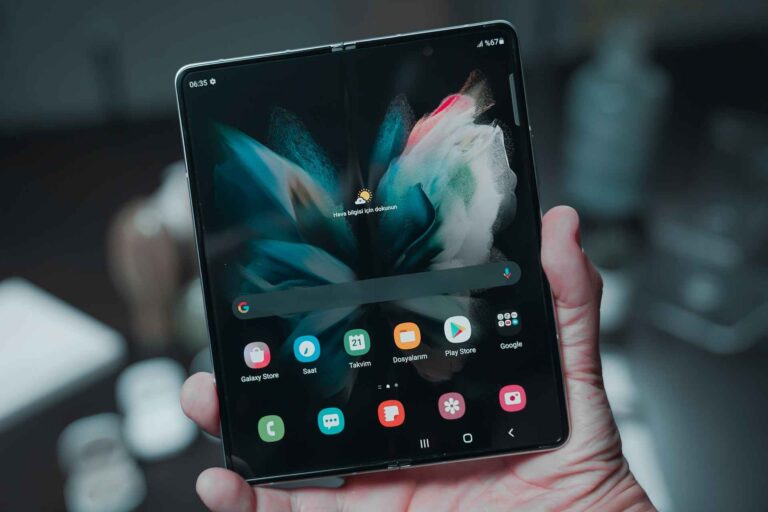Would you use a foldable phone? If the features and looks of these products stick with you, this blog is for you. Much research has been done on this specific topic, proving that foldable phones are the future of technology. These phones have bright colors, sleek designs, and other unique features, including comfortability.

Samsung’s foldable phone was released in February, and its popularity soars high. Huai announced they’ll release their wireless folding phone next month at CES 2019. With their affordable price (less than iPhones) and groundbreaking features, global buyers will be fascinated by these products. These phones may significantly impact the development process as well as change how people interact with one another.
Discusses the benefits of new folding phones and the impacts on the development process
People are buying foldable phones en masse, so manufacturers are looking to develop new models with different configurations and functions.
The various facts and stats behind foldable phones
What is a Foldable Phone?
The analyst predicts that foldable phones will make up 5% of high-end phones by 2023. The analysts predict this technology will account for 30 million units by 2024.
Foldable phones are coming! Get ready by watching this video
The global shipments of foldable phones expect to be 50.1 million units by 2022.
It is clear from the statistics that the folding market will continue to grow. However, many factors could affect its growth. With time, it is likely for it to become mainstream. As a result, it is essential to prepare for this change with a seamless user experience on any foldable screen.
How will the development process change?
The fact that foldable phones are increasing in popularity is a definite game-changer. It will require app developers to research how people use the phone and what types of designs can work for more screen sizes.
- Developers who want to incorporate streaming videos can add additional features such as controls and showcase them on larger apps.
- From the calendar, you can see what’s happening for the rest of the month.
- Multi-window applications can open multiple accounts at the same time.
- Copymatic’s software optimization allows you to read and reply to emails or skim news while editing files. These applications are versatile.
There are many ways foldable phones can influence multi-window app development, including:
- Developers must meet a high-quality standard, including producing attractive digital products.
- Developers must produce more test cases given the number of foldable smartphones sold. It’s also important to consider that multi-window applications require a lot of configuration up front.
- The feedback process can be improved when it comes to foldable phones. It takes more time and cost to create multi-window applications because of the change in the Agile Scrum process.
- Experts anticipate changes in application development time and cost. Indeed, programmers have successfully used AI for such applications for a fraction of the cost and time it would take without these technologies.
How to work with a foldable screen application
The design of an application is just as important as development and testing.
Will foldable phones replace tablets?
Unfortunately, current foldable phones have two states. When unfolded, the phone becomes a tablet. This change in scale accommodates experiences requiring more room for things to happen. The additional space also offers new contexts for applications to allow for multiple tasks or events at once. When folded, the screen appears to be that of a regular smartphone, which one can operate with one hand.
Tips and tricks for designing a foldable device
When you operate a folded phone with one hand, the user can use it with one hand. But when unfolded, the user requires both hands for it. Designers must maintain UI/UX elements in finger areas for a better device user experience.
The UI Impact of Foldable Phones
Changes that occur in the design should be minimal or non-pair. For example, one can always toggle between the unfolded and collapsed states.
The different views in the application depend on the screen’s state. The user has to understand what the app does and how it works because developers should focus on a complete user interface and minimize or remove any changes that happen in design.
How is the development process changing with the use of foldable phones?
Designers and developers must consider the constraints and functionalities associated with a multi-window lifecycle. Designers should know app features, functions, and designs that add to the multitasking experience. Developers in a technical setting must follow guidelines when implementing multitasking features.
Let’s look now at application development for foldable phones
An application name is like a suggestion. With this technology, apps need to transition seamlessly from one screen state to another when the user switches among them.
Three things to do if you are considering developing foldable phones
- The future of folding devices: How to get started
- Activity set to resizable
- Exploring the shift to Multi-Display
Shortly, foldable phones utilize more than one projection screen. It is just as developers configure projected screens for Chrome OS.
- Android 10.0 now supports activities on secondary screens.
- Multi-screening is now more convenient because of multi-resume. With this, you can text on one screen, for instance, and use another to complete a different task simultaneously. We can do multiple updates in switching from one screen to another, such as resizing the action and changing resources.
How do you think foldable phones will change smartphone development?
- Whenever you create an activity to handle the “on Create” and “on configuration changed” events, make sure that it checks the present display.
- Make sure you take care of your VOICE in this era of foldable!
- Secondary screens are one way to take advantage of foldable displays.
How will foldable phones affect us?
It’s becoming cheaper
If there is enough demand for foldable smartphones, they will get cheaper. Samsung has already demonstrated this by pricing the Galaxy Z Flip 3 at Rs 77,999, making it less expensive than other flagship Androids.
Learn what can you do with a foldable phone
Smartphones used to be creative and unique, but now they all come with the same look. Luckily, new models like Samsung’s Foldable Galaxy Z and Motorola’s Razr provide a refreshing change from the norm.
Exciting new designs for foldable devices can encourage companies to retool and make different design choices.




